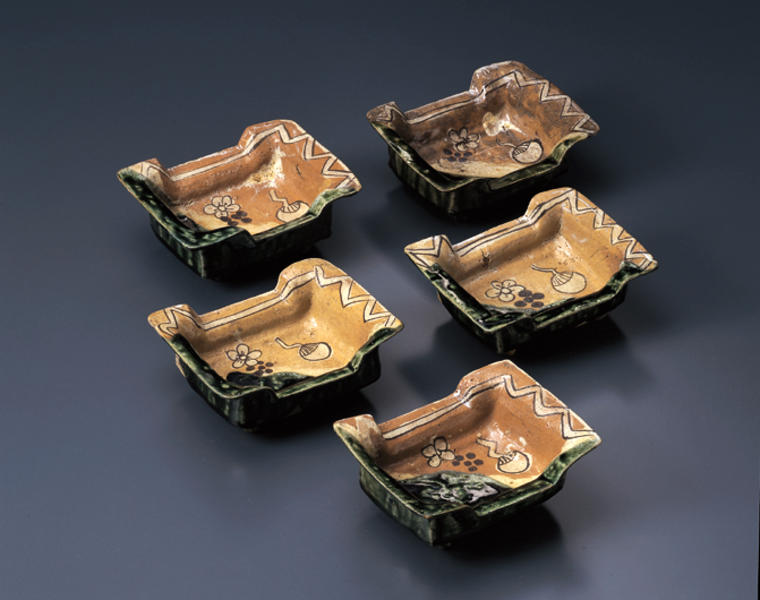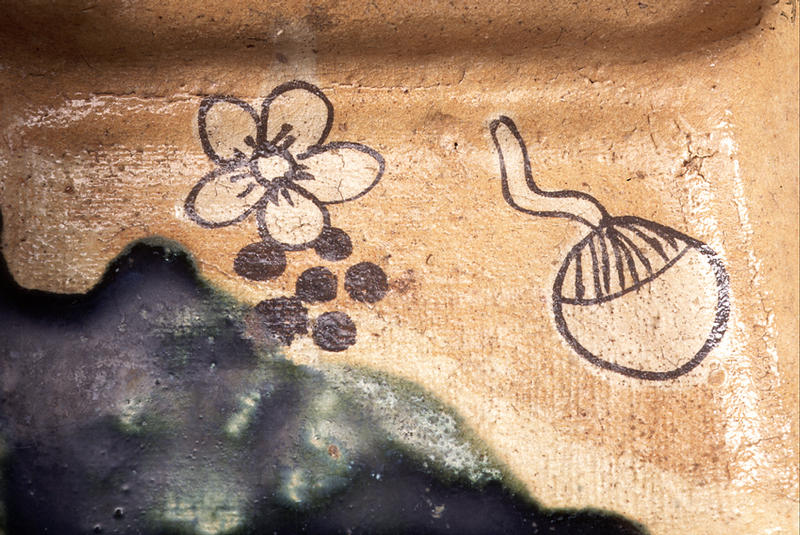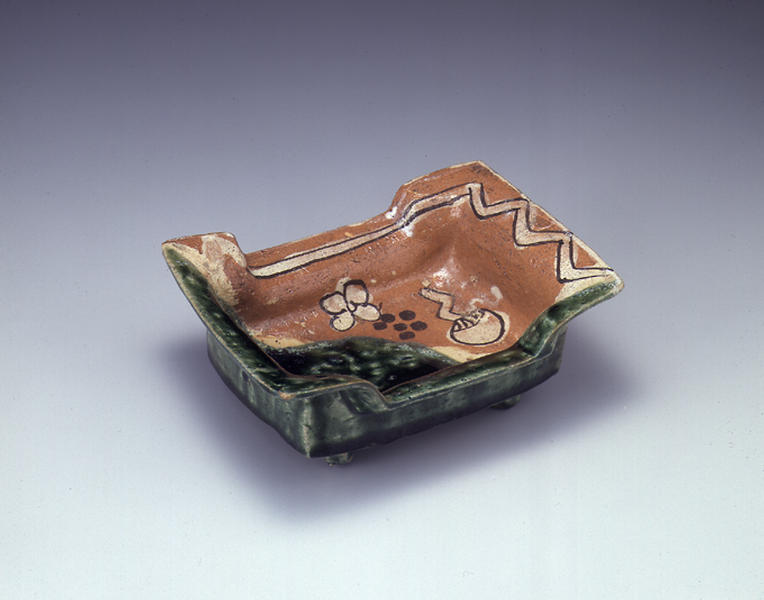Oribe Cutaway Mukozuke Dishes
- Mino kiln, Gifu pref.
- Momoyama to Edo period
- 17th century
- Mino ware, Narumi-oribe type
- H-5.5 D-15 W-11.7
Catalogue Entry
Set of 5 dishes
Momoyama to Edo periods, 17th century
Oribe ware, Narumi-Oribe type
Height, 5.5cm; mouth diameter, 14.9-19.3cm
Rectangular in shape with a flange rim, these dishes are formed in the cutaway shape in which 2 sides are 1 level lower than the other 2. This form appears in both mukozuke dishes and in tebachi dish vessels and was particularly enjoyed by tea masters. The present mukozuke dishes were molded using half red clay and half white clay, with the white clay areas then covered with a green glaze and the red clay areas coated in a transparent glaze with underglaze motif decorations. This specific division of clay and glazing indicates that the potters were aware that the green glaze does not produce a pleasing color affect on top of the red clay.
In general, Oribe wares that are half red and half green are known as Narumi Oribe. The red clay in the present bowls is comparatively darker than that normally found, and this deep red clay in combination with the rich tone achieved in the firing of the green glaze creates an unusually vivid and colorful mukozuke dish form. The underglaze decoration is painted in iron under-glaze and white slip, and these motifs are an able example of the techniques used at the Mino Motoyashiki kiln. 4 of the distinctive Mino ware feet are attached to the four corners of the base of each dish, and a circular sagger mark remains in the center of each base. TA


